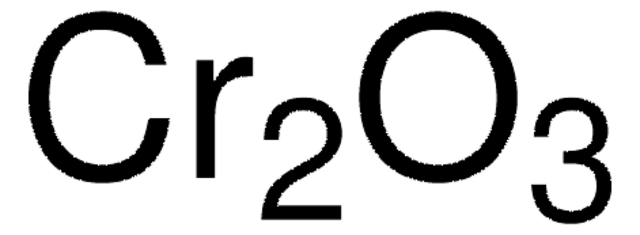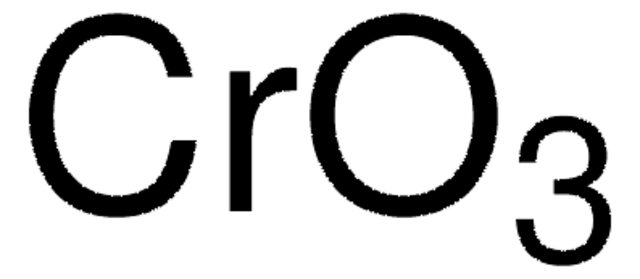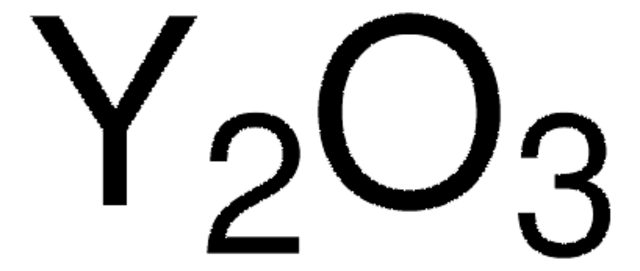393703
Chromium(III) oxide
powder, ≥98%
Synonym(s):
Chromia
Sign Into View Organizational & Contract Pricing
All Photos(4)
About This Item
Empirical Formula (Hill Notation):
Cr2O3
CAS Number:
Molecular Weight:
151.99
EC Number:
MDL number:
UNSPSC Code:
12352303
PubChem Substance ID:
NACRES:
NA.55
grade:
for analytical purposes
form:
powder
Recommended Products
grade
for analytical purposes
Assay
≥98%
form
powder
SMILES string
O=[Cr]O[Cr]=O
InChI
1S/2Cr.3O
InChI key
QDOXWKRWXJOMAK-UHFFFAOYSA-N
Looking for similar products? Visit Product Comparison Guide
General description
Chromium (III) oxide is a chromium complex in which the chromium ion is in +3 oxidation state. The synthesis of its sub-micron powder has been reported.† The IR and Raman spectra of chromium (III) oxide have been studied.† The impact of adding lysozyme on the stability of chromium (III) oxide (Cr2O3) suspension has been evaluated.†
Application
Chromium (III) oxide may be used in the following processes:
- To modify carbon paste electrodes for optimizing its ability to detect nitric oxide.
- Preparation of Ni+Cr2O3 composite coatings.
- Formation of the ternary oxide, CrVMoO7 by solid-state reaction which may be employed in selective oxidation reactions.
Used in a solid-state reaction to form the new ternary oxide, CrVMoO7, can be used in selective oxidation.
Storage Class Code
11 - Combustible Solids
WGK
nwg
Flash Point(F)
Not applicable
Flash Point(C)
Not applicable
Choose from one of the most recent versions:
Already Own This Product?
Find documentation for the products that you have recently purchased in the Document Library.
Customers Also Viewed
Crystal Structure and Raman Spectroscopy of FeVMoO7 and CrVMoO7 with Mo=O Double Bonds.
Wang, X. et al.
Inorganic Chemistry, 37(13), 3252-3252 (1998)
Amperometric Nitric Oxide Sensor Based on Carbon Paste Electrode Modified with Chromium (III) Oxide.
Berisha LS, et al.
Sensors & Transducers Journal, 184(1), 1726-5479 (2015)
The Hydrogen Evolution Reaction on Ni Electrode Material Modified with Molybdenum (IV) Oxide and Chromium (III) Oxide Powders.
Popczyk M and Losiewicz B.
Solid State Phenomena, 228 (2015)
Nien-Hsun Li et al.
Journal of hazardous materials, 198, 356-361 (2011-11-15)
The feasibility of stabilizing nickel-laden sludge by a high-temperature NiCr(2)O(4) synthesis process was investigated with different sintering temperatures, salt contents, molar ratios, and reaction atmospheres. The crystalline phases of species were investigated by using an X-ray diffraction, and the surface
Selvam Sangeetha et al.
Colloids and surfaces. B, Biointerfaces, 100, 36-41 (2012-07-07)
Stabilization of collagen for various applications employs chemicals such as aldehydes, metal ions, polyphenols, etc. Stability against enzymatic, thermal and mechanical degradation is required for a range of biomedical applications. The premise of this research is to explore the use
Our team of scientists has experience in all areas of research including Life Science, Material Science, Chemical Synthesis, Chromatography, Analytical and many others.
Contact Technical Service







